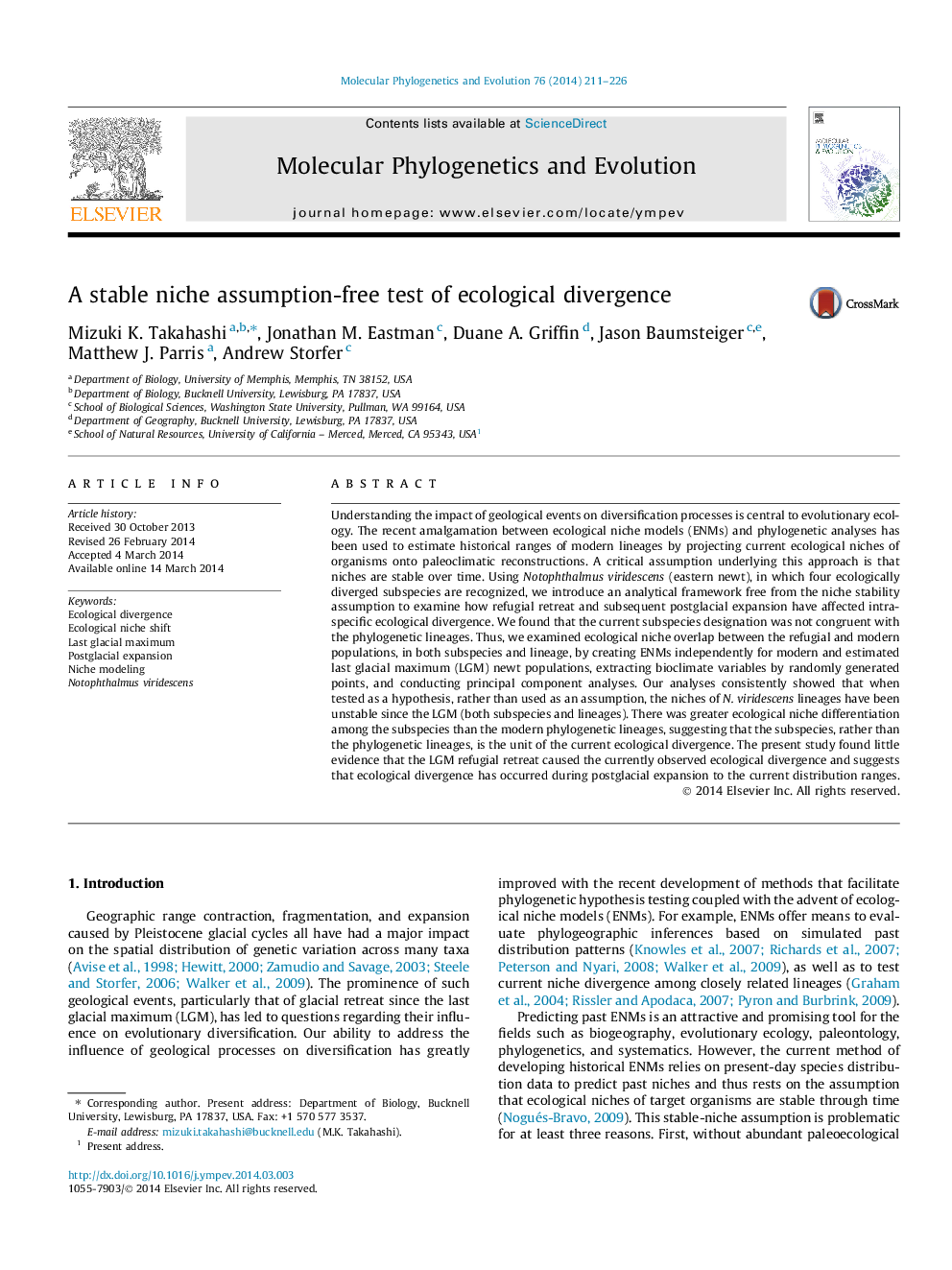| Article ID | Journal | Published Year | Pages | File Type |
|---|---|---|---|---|
| 2833888 | Molecular Phylogenetics and Evolution | 2014 | 16 Pages |
•We used eastern newt, in which four subspecies are recognized, as a model system.•We proposed a novel analytical method to test historic processes driving divergence.•We tested niche stability since the LGM as a hypothesis, rather than an assumption.•The niches of the eastern newt lineages have dramatically shifted since the LGM.•Ecology, rather than vicariance, was important in facilitating the ecological divergence.
Understanding the impact of geological events on diversification processes is central to evolutionary ecology. The recent amalgamation between ecological niche models (ENMs) and phylogenetic analyses has been used to estimate historical ranges of modern lineages by projecting current ecological niches of organisms onto paleoclimatic reconstructions. A critical assumption underlying this approach is that niches are stable over time. Using Notophthalmus viridescens (eastern newt), in which four ecologically diverged subspecies are recognized, we introduce an analytical framework free from the niche stability assumption to examine how refugial retreat and subsequent postglacial expansion have affected intraspecific ecological divergence. We found that the current subspecies designation was not congruent with the phylogenetic lineages. Thus, we examined ecological niche overlap between the refugial and modern populations, in both subspecies and lineage, by creating ENMs independently for modern and estimated last glacial maximum (LGM) newt populations, extracting bioclimate variables by randomly generated points, and conducting principal component analyses. Our analyses consistently showed that when tested as a hypothesis, rather than used as an assumption, the niches of N. viridescens lineages have been unstable since the LGM (both subspecies and lineages). There was greater ecological niche differentiation among the subspecies than the modern phylogenetic lineages, suggesting that the subspecies, rather than the phylogenetic lineages, is the unit of the current ecological divergence. The present study found little evidence that the LGM refugial retreat caused the currently observed ecological divergence and suggests that ecological divergence has occurred during postglacial expansion to the current distribution ranges.
Graphical abstractFigure optionsDownload full-size imageDownload as PowerPoint slide
